Home> Company News> Learning The Basics of the Pump Stroke
- AddressTianqiao, Beiyuan District, Jinan,Shandong
- Factory Addresstian qiao,jinan, shandong,China(Mainland)
- Worktime9:00-18:00(Beijing time)
- Phone(Working Time)86 0531-8299 9952
- Fax86 0531 -82990353
Pump stroke is a critical aspect of hydraulic systems and plays a significant role in determining system performance and efficiency. Proper pump stroke adjustment is essential to ensure optimal system operation, and it is important for hydraulic system operators and technicians to understand this process.
In this guide, we will explore the concept of pump stroke, discuss the factors that affect pump stroke, explain the pump stroke adjustment process, highlight the benefits of proper pump stroke adjustment, and provide maintenance tips for maintaining proper pump stroke. By the end of this guide, you will have a comprehensive understanding of pump stroke and its importance in hydraulic systems.
What is Pump Stroke?
A pump stroke refers to the length of the piston or plunger stroke in a hydraulic pump, which affects the volume of fluid being moved through the system. The pump stroke is a critical component in hydraulic systems, as it determines the flow rate and pressure of the fluid being moved. The pump stroke process involves a number of components, including the pump, motor, and control mechanism.
The pump stroke begins when the motor is activated and drives the pump, which creates pressure that pushes the fluid through the system. The control mechanism is responsible for adjusting the length of the piston or plunger stroke, which affects the volume of fluid being moved through the system. The pump stroke is measured in terms of the distance traveled by the piston or plunger from the start to the end of the stroke.
Factors that affect the pump stroke include the system's flow rate, pressure requirements, and the viscosity of the fluid being moved. The correct pump stroke length must be determined based on these factors to ensure optimal system performance and efficiency. Improper pump stroke adjustment can lead to reduced performance, increased wear and tear on the system, and costly repairs or replacements.
Understanding the Pump Stroke Adjustment Process
The pump stroke adjustment process involves changing the length of the piston or plunger stroke in a hydraulic pump to alter the amount of fluid being moved. Adjusting the stroke can affect the pump's flow rate and pressure, and it is crucial to ensure that the stroke is set correctly for the specific hydraulic system.
To adjust the pump stroke, it is necessary to determine the correct stroke length for the specific application. This depends on various factors, such as the desired flow rate, the viscosity of the fluid being pumped, and the pump's maximum pressure rating. It is essential to consult the pump's manual or a qualified technician to determine the correct stroke length for your hydraulic system.
Once the correct stroke length has been determined, it is necessary to adjust the pump stroke accordingly. Different pumps have different mechanisms for adjusting the stroke, and the adjustment process may vary depending on the pump's design.
In general, the pump must first be stopped and isolated from the hydraulic system. The stroke adjustment mechanism is usually located near the pump's drive motor and can be adjusted using a wrench or other tools. After making the necessary adjustments, the pump should be reconnected to the system, and the flow rate and pressure should be checked to ensure proper operation.
In addition to manual pump stroke adjustment, some pumps feature automatic stroke adjustment mechanisms that continuously monitor the flow rate and adjust the stroke length accordingly. These pumps use sensors to detect changes in the system's flow rate and adjust the stroke length accordingly to maintain a constant flow rate. Automatic stroke adjustment mechanisms can improve pump efficiency and reduce maintenance requirements.
It is essential to ensure that the correct stroke length is used for the specific application to avoid damage to the pump or the hydraulic system. Failure to adjust the pump stroke correctly can result in reduced pump performance, increased wear and tear, and costly repairs or replacements. Regular maintenance and adjustment of the pump stroke are crucial to the optimal performance and longevity of hydraulic systems.
Benefits of Proper Pump Stroke Adjustment
Proper pump stroke adjustment is essential for optimal hydraulic system performance and efficiency. Here are some benefits of properly adjusted pump stroke:
-
Improved Flow Rate: By adjusting the pump stroke to the correct length, the pump can move the right amount of fluid through the system, resulting in an improved flow rate.
-
Reduced Energy Consumption: Properly adjusted pump stroke means the pump is working efficiently, requiring less energy to move the fluid through the system. This reduces energy consumption and can save on operating costs.
-
Increased System Longevity: Improper pump stroke adjustment can lead to premature wear and tear on the pump and other system components. Properly adjusted pump stroke can help to extend the lifespan of the system.
-
Enhanced Performance: When the pump stroke is properly adjusted, the system can operate at maximum efficiency and performance, leading to improved productivity and output.
-
Reduced Downtime: A hydraulic system with a properly adjusted pump stroke is less likely to experience breakdowns or failures, resulting in reduced downtime and increased productivity.
Overall, properly adjusting the pump stroke can have significant benefits for hydraulic system performance, efficiency, and longevity. It is a simple step that can make a big difference in the system's overall performance.
Common Problems with Pump Stroke
Despite the importance of pump stroke adjustment, problems can arise that affect the optimal functioning of hydraulic systems. Some of the most common problems associated with pump stroke include:
-
Inconsistent flow rate: If the pump stroke is not adjusted correctly, it can lead to inconsistent flow rates, which can cause issues such as poor system performance or even system failure.
-
High energy consumption: If the pump stroke is set too high, the system may use more energy than necessary to move the fluid, which can increase operating costs.
-
Cavitation: Cavitation is a phenomenon that occurs when air bubbles form in the fluid, which can lead to pump damage and system failure. Improper pump stroke adjustment can cause cavitation, especially if the pump is running at a high flow rate.
-
Overheating: If the pump stroke is set too high, it can cause the hydraulic fluid to overheat, leading to a range of problems, including decreased efficiency and component damage.
-
Premature component wear: Improper pump stroke adjustment can cause excessive wear on pump components, leading to the need for costly repairs or replacements.
-
Increased noise: If the pump stroke is not set correctly, it can cause increased noise levels in the hydraulic system, which can be a sign of potential damage or failure.
-
Reduced system efficiency: If the pump stroke is not set correctly, it can lead to reduced system efficiency, which can cause a range of issues such as decreased productivity, increased operating costs, and even system failure.
When these problems arise, it is crucial to diagnose and fix them as quickly as possible to prevent further damage to the system. In the next section, we will discuss how to diagnose and fix common pump stroke problems.
Pump Stroke Maintenance
Proper maintenance is crucial for maintaining optimal pump stroke and ensuring the efficient operation of hydraulic systems. Here are some essential maintenance practices that should be performed regularly:
-
Regular inspection: Regular inspection of the pump stroke mechanism is necessary to detect any signs of wear or damage. This includes checking for any leaks, corrosion, or loose parts.
-
Lubrication: Proper lubrication is essential for maintaining smooth pump stroke operation. It is recommended to use the lubricant specified in the pump manual, and the lubrication schedule should be followed strictly.
-
Cleaning: Regular cleaning of the pump stroke mechanism is necessary to prevent contamination and damage to the system. Cleaning should be performed using the recommended cleaning agent and method specified in the pump manual.
-
Pressure testing: Pressure testing the system is necessary to ensure that the pump stroke is performing within the specified range. Any deviation from the expected performance should be investigated immediately to identify the underlying problem.
-
Replacement of worn parts: Worn or damaged parts should be replaced promptly to prevent further damage to the system. This includes worn seals, gaskets, and other components that can affect pump stroke operation.
-
Record keeping: Proper record keeping is necessary to track the maintenance history of the pump stroke mechanism. This includes keeping track of the maintenance schedule, any repairs performed, and any changes made to the system.
By following these maintenance practices, you can ensure that your pump stroke operates smoothly and efficiently, leading to improved system performance and longevity.
Conclusion
In conclusion, pump stroke is a critical aspect of hydraulic systems that requires proper understanding, adjustment, and maintenance. Proper pump stroke adjustment can improve system performance, increase efficiency, and reduce maintenance requirements, while improper adjustment can lead to reduced performance, increased wear and tear, and costly repairs or replacements. Regular maintenance is also essential for maintaining optimal pump stroke and system performance. By understanding the pump stroke process, determining the correct pump stroke for your system, and following proper maintenance procedures, you can ensure that your hydraulic system operates smoothly and efficiently. It is important to prioritize pump stroke adjustment and maintenance to ensure the long-term reliability and performance of your hydraulic system.


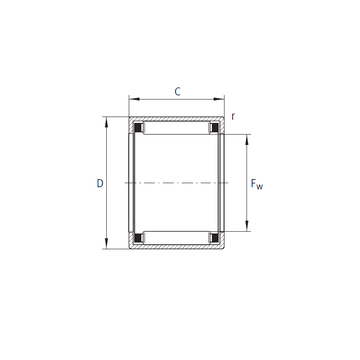 SCE5612 INA Needle Roller Bearings
SCE5612 INA Needle Roller Bearings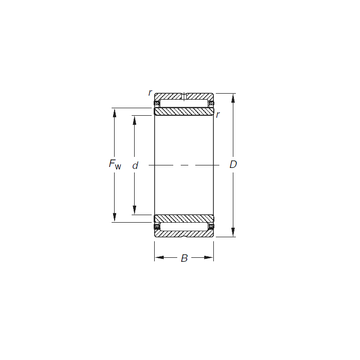 NKJ20/16 Timken Needle Roller Bearings
NKJ20/16 Timken Needle Roller Bearings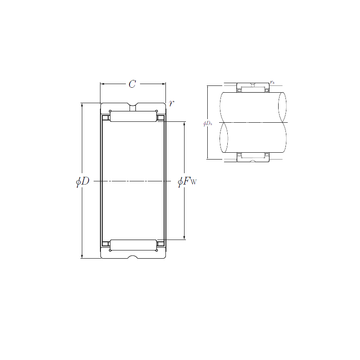 RNA4976 NTN Needle Roller Bearings
RNA4976 NTN Needle Roller Bearings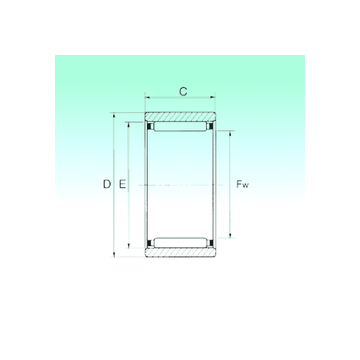 RNAO 35x47x16 NBS Needle Roller Bearings
RNAO 35x47x16 NBS Needle Roller Bearings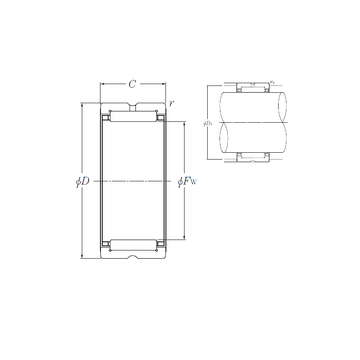 NK42/20R NTN Needle Roller Bearings
NK42/20R NTN Needle Roller Bearings